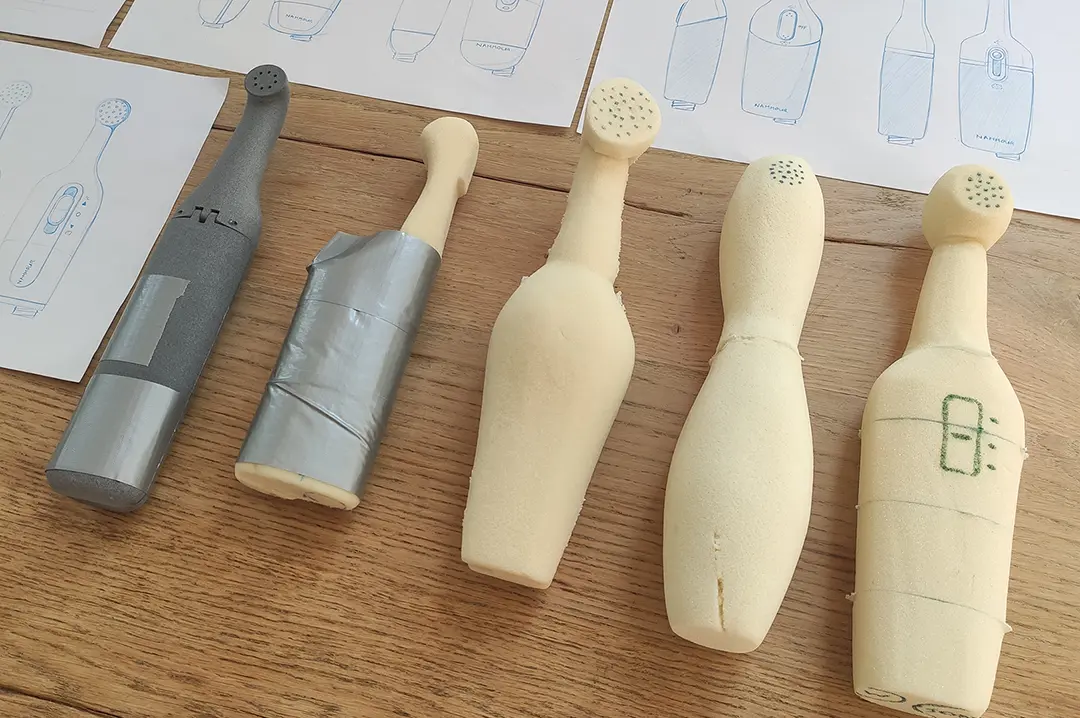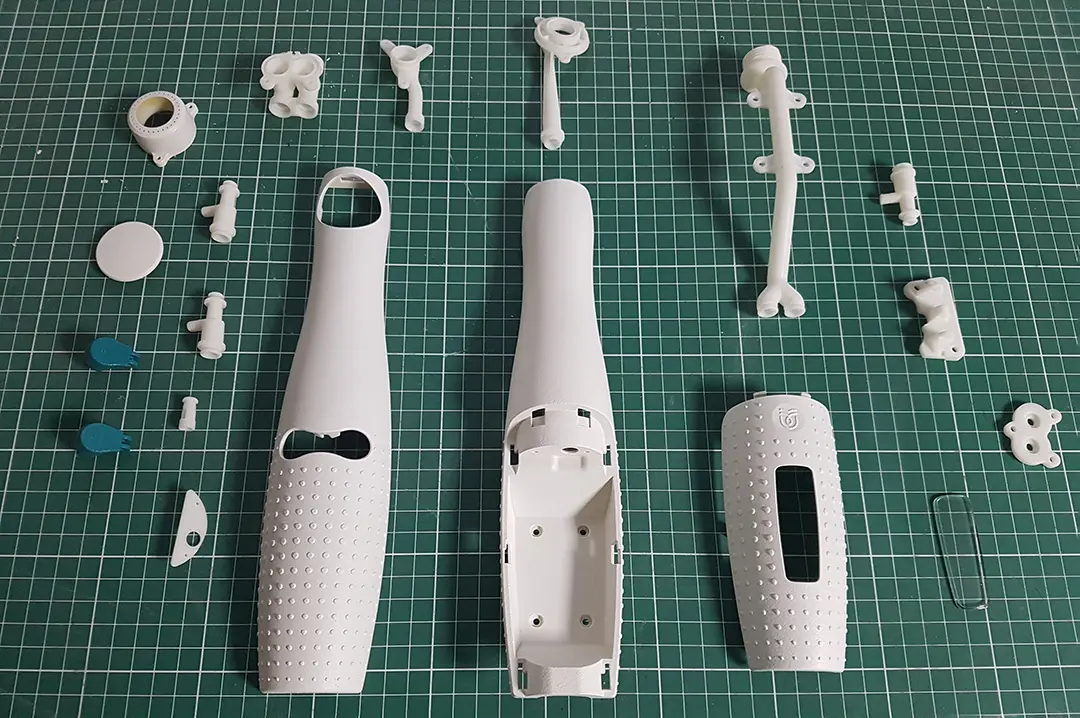Getting a prototype made, all you need to know
If you have an invention or product idea, it’s essential that you get a prototype made to help you visualize and test your concept. But what does it actually take to have a prototype made? At ManGo we create many prototypes for our clients. However, not all prototypes are the same. There are several types that we use serving different purposes depending on the stage of development your product is in. Let’s take a deep dive into what you need to know.
How to get a prototype made
Our development process involves many steps, including research, conceptualization, modeling, prototyping, testing, and refinement. As you can see getting a prototyping made comes somewhere in the middle. This is where physical models are created based on the 3D CAD data that was designed during the modeling stage. Prototypes can be made in various ways depending on your budget and whether or not they need to be functional prototypes with moving parts or just aesthetic prototypes that represent how the final product will look. In any case the engineers at ManGo will inform you about the wisest choices for prototyping methods. The components will then either be made in our own workshop or ordered from trusted third parties. In the final step to have your prototype made our design team assembles all components to make it complete.


Testing prototypes
So now you know how to get a prototype made, but what then? After prototyping comes testing; this is where you see if the design works as intended and if there are any issues that need to be addressed before mass production begins. In the testing process our engineers refine the design and often get a few additional rounds of prototypes made to validate improvements. Once this has been done you have a final product design ready for final mass production optimalization.
Different prototypes
Depending on the nature of a project several types of prototypes during a development process are required. Some variations are:
Spit models
Often made from paper, cardboard or foam. These are mostly handmade to quickly test a concept’s features, size, ergonomics and semantics to fine tune a design.
Visual prototype
Mostly used to take a concept further by adding real dimensionality in order to communicate shape and aesthetics to stakeholders. Visual prototypes are usually made with 3D printing or CNC milling techniques and are often used for presentations or trade shows in order to show people what the finished product might look like. They are not always accurate representations of how the finished product will look though since they may lack features such as electronics or finishes that would be applied at a later stage in production.
Proof Of Concept (POC)
Serves to verify key functional aspects of the to be developed product; usually it does not have all the functionalities of the final product. For example, if a to be developed product has one complex feature of which it is uncertain how and if it will function focus is put on first prototyping and testing this aspect of the design and getting it to work, before putting effort in other aspects which are less complex to realize.
Working prototype
Meant for more in-depth testing and evaluation than either a POC or Visual Prototype. Working prototypes must be fully functional so that they can be tested for ergonomics, safety features, usability, etc., while also being able to capture vital performance data such as temperature range, operating speed/time/pressure, battery life duration tests, etc. Often these prototypes will require more expensive components due to their need for advanced functionality during testing. Also, these prototypes can be used for certification procedures at notified bodies.
How much does it cost to have a prototype made
Now you have learned how to get a prototype made you must be wondering how much they cost. Well, the cost of having a prototype made will depend on several factors such as the size, complexity, manufacturing method, assembly time and materials used. Generally speaking, most prototypes can cost anywhere from a few hundred to tens of thousands of euros. This is why it’s important that we start with simple inexpensive spit model prototypes from which a lot can be learned already and work step by step towards the final and much more expensive working prototype.
Conclusion
Getting a prototype made for your invention or product idea can seem daunting at first but with our experts at your side it doesn’t have to be. It’s important to keep in mind that to have a prototype made is essential in the product design process. At ManGo we always discuss and advise our clients the best way to use prototypes for their particular development.
More information
Want to find out how to get a prototype made for your product development? Contact us by phone, our online form or send an e-mail to:





